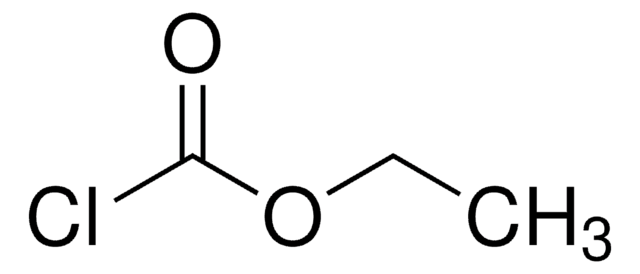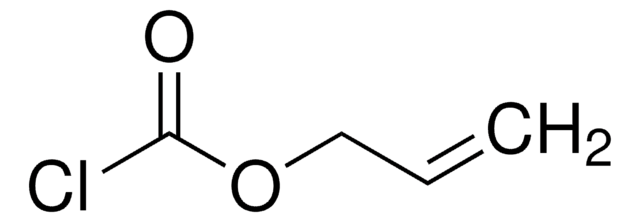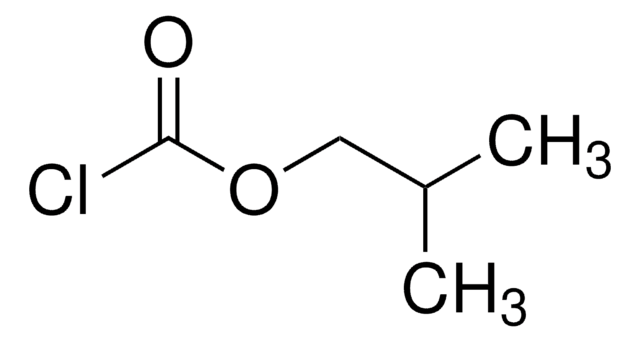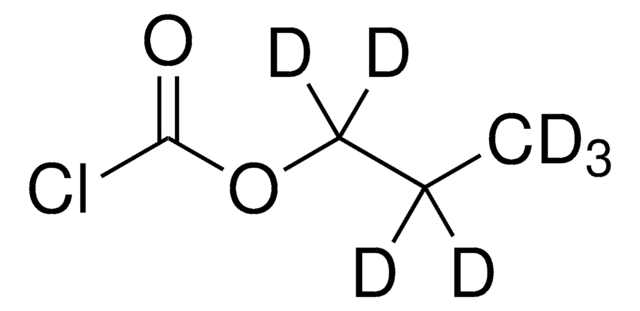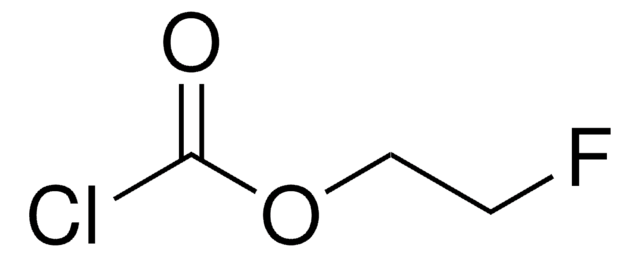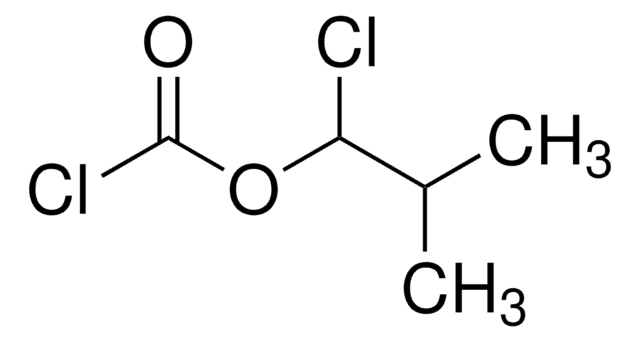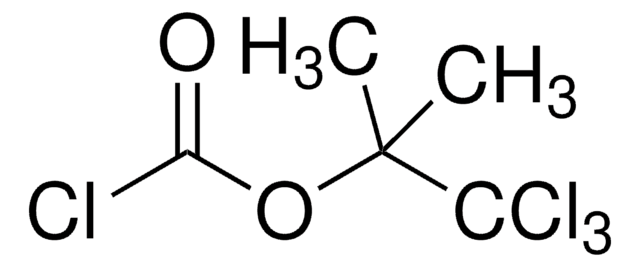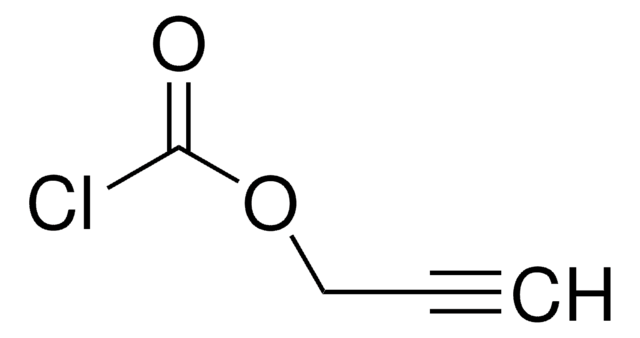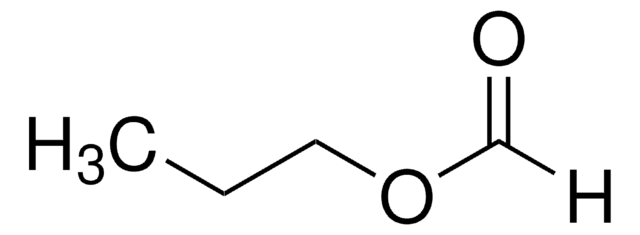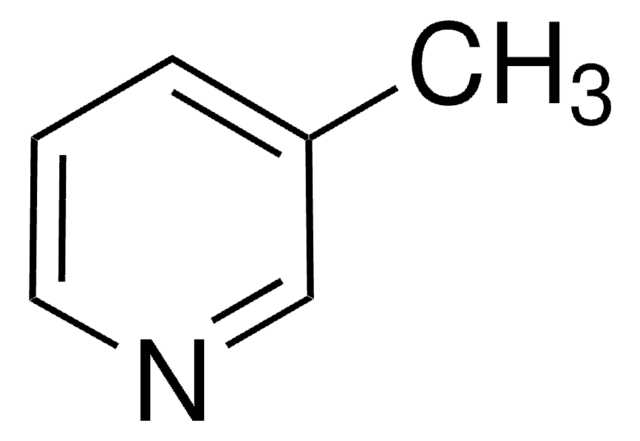Key Documents
About This Item
Polecane produkty
ciśnienie pary
0.87 psi ( 20 °C)
Próba
98%
Postać
liquid
współczynnik refrakcji
n20/D 1.404 (lit.)
tw
105-106 °C (lit.)
rozpuszczalność
benzene: miscible(lit.)
chloroform: miscible(lit.)
diethyl ether: miscible(lit.)
gęstość
1.09 g/mL at 25 °C (lit.)
temp. przechowywania
2-8°C
ciąg SMILES
CCCOC(Cl)=O
InChI
1S/C4H7ClO2/c1-2-3-7-4(5)6/h2-3H2,1H3
Klucz InChI
QQKDTTWZXHEGAQ-UHFFFAOYSA-N
Zastosowanie
- as derivatization reagent in quantification of dopamine, serotonin and norepinephrine in human urine by solid phase microextraction-gas chromatography-triple quadrupole mass spectrometry
- in the preparation of dipropyl 3,6-diphenyl-1,2-dihydro-1,2,4,5-tetrazine-1,2-dicarboxylate
Hasło ostrzegawcze
Danger
Zwroty wskazujące rodzaj zagrożenia
Zwroty wskazujące środki ostrożności
Klasyfikacja zagrożeń
Acute Tox. 3 Inhalation - Acute Tox. 4 Oral - Eye Dam. 1 - Flam. Liq. 2 - Skin Corr. 1B
Kod klasy składowania
3 - Flammable liquids
Klasa zagrożenia wodnego (WGK)
WGK 1
Temperatura zapłonu (°F)
71.6 °F
Temperatura zapłonu (°C)
22 °C
Środki ochrony indywidualnej
Faceshields, Gloves, Goggles, type ABEK (EN14387) respirator filter
Wybierz jedną z najnowszych wersji:
Masz już ten produkt?
Dokumenty związane z niedawno zakupionymi produktami zostały zamieszczone w Bibliotece dokumentów.
Klienci oglądali również te produkty
Nasz zespół naukowców ma doświadczenie we wszystkich obszarach badań, w tym w naukach przyrodniczych, materiałoznawstwie, syntezie chemicznej, chromatografii, analityce i wielu innych dziedzinach.
Skontaktuj się z zespołem ds. pomocy technicznej